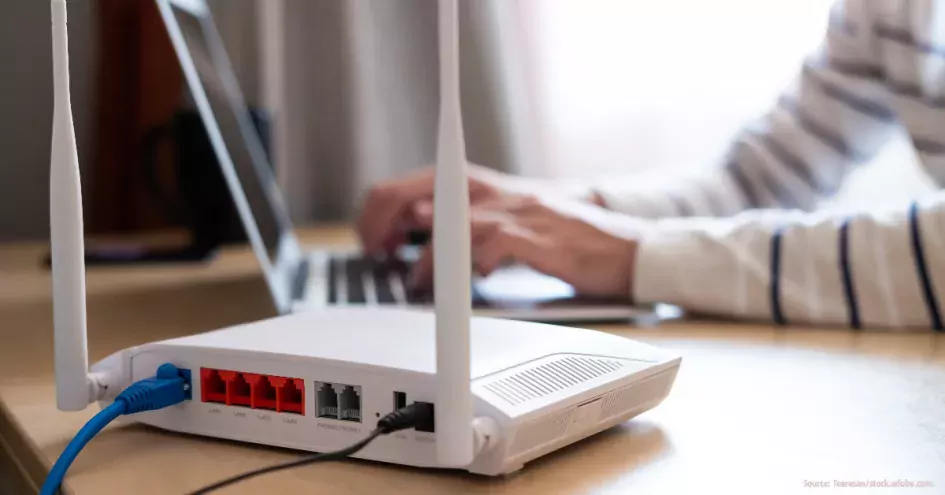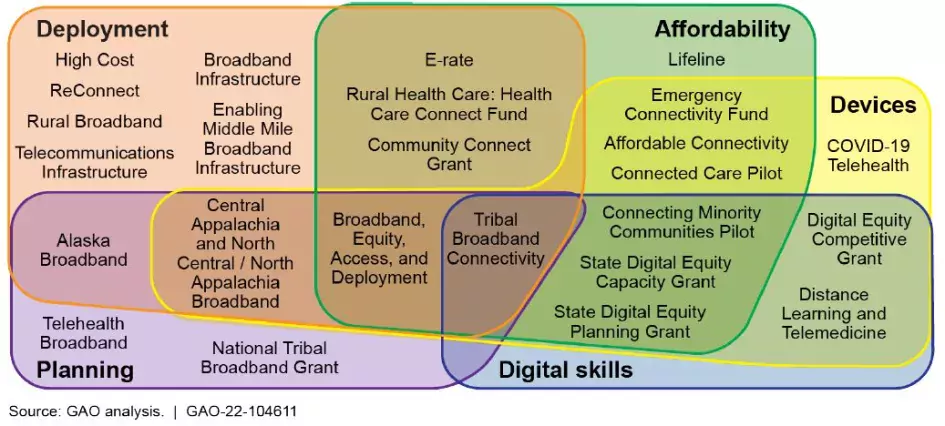Closing the Digital Divide for the Millions of Americans without Broadband
Broadband is critical to everyday activities like work, school, and health care. Yet, despite the importance of this technology—and the many federal programs designed to improve access to it—millions of Americans either don’t have broadband available to them or can’t afford to pay for it. The gap between those with and without access to broadband has become known as the “digital divide."
The federal government has recognized broadband access is a critical issue—the Federal Communications Commission has a goal of universal service for all Americans—and Congress recently approved over $42 billion to accelerate efforts to expand access. But addressing the digital divide continues to be a challenge.
Today’s WatchBlog post looks at why broadband remains inaccessible to certain communities, and why new federal efforts may still fail to reach them.
Image

The digital divide is partially about affordability…
Nearly a third of Americans who do not have broadband say the reason is because it costs too much. There are federal programs designed to help. For example, the FCC’s Affordable Connectivity Program offers monthly discounts on broadband service to eligible households. As of September 2022, more than 14 million households had enrolled—about a third of the estimated eligible households. We looked at this disconnect and found that the FCC could strengthen the program with better consumer outreach (including to those with limited English proficiency) and better fraud protection. Taking these steps may make more eligible households aware of the program and how to receive the discounts on their monthly internet service bills.
…And it is about availability too
Closing the digital divide is also challenged by the availability of broadband infrastructure in many communities. There have been recent improvements in satellite technology and 5G access. But a significant gap in broadband access remains within urban areas, for example, where high speed broadband coverage is often more limited in low-income areas, and between U.S. urban and rural populations because of infrastructure limitations. And despite federal efforts, broadband access on tribal lands has also lagged behind the rest of the country. In 2020, 18% of people living on tribal lands couldn't access broadband service, compared to 4% of people in non-tribal areas.
For rural communities, since 2019, the U.S. Department of Agriculture's (USDA’s) ReConnect program has awarded more than $1.5 billion in grants and loans to broadband providers to incentivize expanding services in rural areas. There are also some federal programs designed to increase broadband access on tribal lands, including two different grant programs managed by the National Telecommunications and Information Administration (NTIA).
The Mosaic of 25 Federal Programs with Broadband as a Main Purpose, as of November 2021, by Purpose Category
Image

But in a recent report, we found that USDA hasn't set specific goals for what the ReConnect program should achieve or determined how it will measure its progress. Similarly, NTIA’s goals for one of its programs also can’t be easily measured. These programs can also be vulnerable to fraud.
We’ve also noticed that many potential recipients of broadband funding in underserved areas struggle to identify which of the many federal programs meets their needs, and have difficulty navigating the programs’ complex application processes. These issues may all be hampering the federal government’s ability to increase broadband access in these areas.
More help is on the way
The digital divide has issues of both affordability and availability. The government has developed multiple programs to try to make it more affordable, and Congress has increased the funding for broadband deployment to provide better access. There are other benefits as well—we found in a new report that the increased funding will support jobs for thousands of workers in the telecommunications industry. We will continue our work monitoring these programs to find ways that help them meet their goals.
The past few years since the beginning of the COVID-19 pandemic have highlighted just how crucial access to affordable broadband is for many aspects of modern life. While there are challenges to be addressed, the federal government’s commitment to a goal of universal access is an opportunity to allow all Americans to realize the benefits of broadband.
Learn more about this issue by checking out our podcast with GAO’s Andrew Von Ah on workforce issues facing broadband and 5G expansion.
To learn more about our work on broadband access and expansion, visit our Telecommunications Topic Page.
- Comments on GAO’s WatchBlog? Contact blog@gao.gov.





